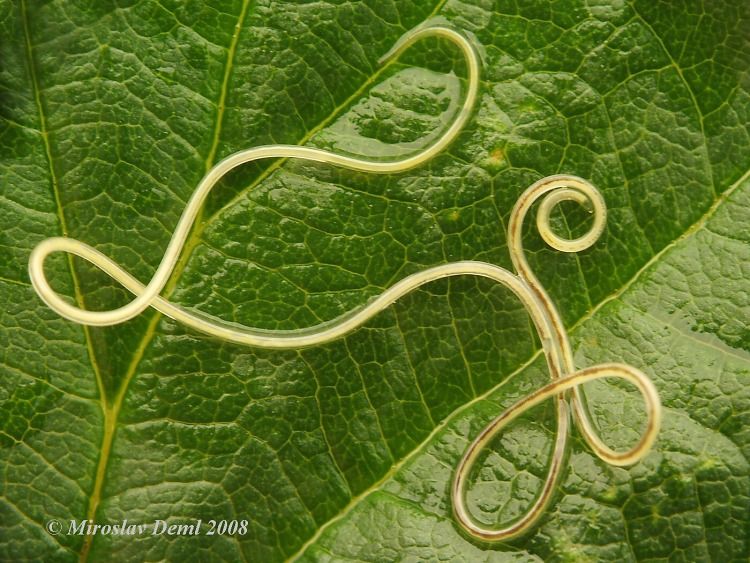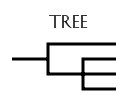
PROTOSTOMIA
Ecdysozoa
[© Miroslav Deml]
Chapter Outline
- Description of Protostomia
- Classification of Protostomia
- Lophotrochozoa
- Annelida
- Mollusca
- Gnathifera
- Ecdysozoa
- Panarthropoda

Links to external sites will appear in pop-up windows.
Ecdysozoa is the second major split in Protostomia. Unlike the organisms in Spiralia, the embryos of ecdysozoans do not go through spiral cleavage. The other trait that organisms in this clade share is molting, or shedding their outer layer occasionally.
- Protostomia
- Spiralia
- Lophotrochozoa (28-III)
- Mesozoa
- Dicyemida - Rhombozoans
- Orthonectida - Orthonectids
- Platyhelminthes - Flatworms
- Nemertea - Ribbon Worms
- Annelida - Segmented Worms (28-IV)
- Phoronida - Horseshoe Worms
- Brachiopoda - Lampshells
- Mollusca - Molluscs (28-V)
- Bryozoa - Bryozoans
- Entoprocta - Entoprocts
- Cycliophora - Symbion pandora
- Gastrotricha - Gastrotrichs
- Acanthocephala - Thorny-Headed Worms
- Mesozoa
- Gnathifera (28-VI)
- Rotifera - Rotifers
- Gnathostomulida
- Micrognathozoa
- Chaetognatha - Arrow Worms
- Lophotrochozoa (28-III)
- Ecdysozoa (28-VII)
- Nematoda - Roundworms
- Nematomorpha - Horsehair Worms
- Scalidophora
- Kinorhyncha - Spiny-Headed Worms
- Loricifera - Loriciferans
- Priapulida - Priapulid Worms
- Panarthropoda (28-VIII)
- Tardigrada - Tardigrades (Water Bears)
- Onychophora - Velvet Worms
- Arthropoda (Ch. 29) >>> (Arthropods)
- Spiralia
| NEMATODA |
"Nematodes are found in almost all habitats, but are often overlooked because most of them are microscopic in size. For instance, a square yard of woodland or agricultural habitat may contain several million nematodes. Many species are highly specialized parasites of vertebrates, including humans, or of insects and other invertebrates. Other kinds are plant parasites, some of which can cause economic damage to cultivated plants. Nematodes are particularly abundant in marine, freshwater, and soil habitats. One study in Colorado estimated that nematodes consumed about as much grass as a prairie dog colony." - McSorley
As of 2024, 30 species of Nematoda have been observed in iNaturalist in the US and 44 throughout the world.
| Resources: |
| NEMATOMORPHA |
"The phylum Nematomorpha (from the Greek nema, "thread," and morphe, "shape"), consists of a group of invertebrates, commonly called horsehair or gordian worms, that has no close relationships with any other living organisms. Most horsehair worms are observed in their adult, free-living stage among the vegetation near edges of ponds and streams, although a few semiterrestrial species occur in damp soil. A small group of marine species, parasitic on crustaceans, have been collected from coastal environments." - Mark J. Wetzel
There are two classes of horsehair worms. As of 2024, 3 species of Nematomorpha have been observed in iNaturalist in the US and 7 throughout the world.
| Resources: |
| KINORHYNCHA |
This is the phylum of Mud Dragons.
"Around 150 species of kinorhynchs have been described since this group was first discovered on the northern coast of France in 1841, nearly all of them less than 1 mm long. They have been collected as far north as Greenland and as far south as Antarctica, as well as in the Black Sea. Most live in marine sand or mud from the intertidal zone to a depth of 5000 to 8,000 meters, but some are known from algal mats or holdfasts, sandy beaches, and brackish estuaries and others have been found living on hydrozoans, bryozoans, or sponges" - Leo Shapiro
As of 2024, only one species of Kinorhyncha has been observed in iNaturalist throughout the world.
| Resources: |
| LORICIFERA |
This is the phylum of Loriciferans. As of 2024, no observations of Loricifera have been submitted to iNaturalist throughout the world.
| Resources: |
| PRIAPULIDA | |
This is the phylum of Priapulid Worms, or Penis Worms. As of 2024, just one species of Priapulida has been observed in iNaturalist in the US and 2 throughout the world.
- Cactus Worm (Priapulus caudatus) - only iNat observations in the US for Priapulida
| Resources: |
| [ Previous Page ] | [ Next Page ] |